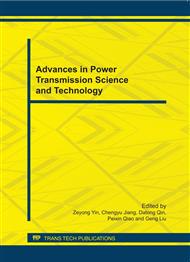p.411
p.415
p.419
p.424
p.428
p.434
p.439
p.443
p.448
Quantitative Evaluation of Aero Spiral Bevel Gear Meshing Quality
Abstract:
In order to precisely control the meshing performance of spiral bevel gear pair, this paper represents a quantitative evaluation method using transmission error curve and tooth face contact trace. The design, using local synthesis method, obtains the manufacturing parameters of gear pair and forms the tooth face of spiral bevel gear. This paper accomplishes the quantitative evaluation by the following methods: using tooth contact analysis (TCA) to obtain actual transmission error curve and tooth face contact trace; quantitatively evaluating the transmission error curve by comparing the web values of actual and preset theoretical transmission error curves; quantitatively evaluating the tooth face contact trace by comparing the requirements (such as in shape, size and position) defined for spiral bevel gear tooth face contact trace and the corresponding parameters of an externally-connected rectangle, which surrounds the tooth face contact trace and is used to describe tooth face contact trace. This paper conducts a meshing performance analysis and quantitative evaluation of an aero spiral bevel gear pair. The result shows that, the actual and preset theoretical transmission error curves are basically in coincidence and the tooth face contact trace meets the requirements. This quantitative evaluation method lays a foundation for analyzing the relationship between transmission error curve and tooth face contact trace and for analyzing the installation error sensitivity.
Info:
Periodical:
Pages:
428-433
Citation:
Online since:
August 2011
Authors:
Price:
Сopyright:
© 2011 Trans Tech Publications Ltd. All Rights Reserved
Share:
Citation:


